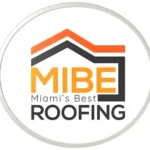The Roof Survey Checklist: What You Need to Know to Inspect Your Roof Like a Pro
As a homeowner, it’s essential to prioritize your roof’s maintenance to ensure a safe and secure living environment. A well-maintained roof can save you from costly repairs, reduced energy bills, and potential damage to your property’s interior. Conducting regular roof surveys is a critical step in maintaining your roof’s integrity. But how do you inspect your roof like a pro? It starts with having a thorough checklist in hand. Here’s a comprehensive guide to help you inspect your roof like a pro, reducing the risk of unexpected leaks and damage.
Check for Missing, Loose, or Damaged Roof Shingles
The first step in conducting a roof survey is to inspect the exterior of your roof, specifically the shingles. You’re looking for any signs of damage, wear, or neglect. Check for missing, loose, or damaged shingles, particularly around chimneys, skylights, and valleys. These areas are more prone to damage due to increased exposure to weathering. Take note of the condition of your shingles, paying attention to cracked, curled, or deteriorated shingles that can compromise the integrity of your roof.
Inspect Your Roof’s Flashing
Flashing is an often-overlooked but critical component of your roof. It’s designed to protect your roof’s vulnerable seams and joints from water and air infiltration. Check the flashing around chimneys, vents, skylights, and other protrusions for signs of damage, rust, or deterioration. Look for gaps, gaps, or worn-out flashings that can lead to leaks and structural issues.
Examine Your Gutters and Downspouts
Gutters and downspouts play a vital role in your roof’s drainage system. They channel rainwater away from your home, preventing damage and erosion. Inspect your gutters and downspouts for clogs, sagging, or missing sections. Make sure the downspouts are functioning correctly, and debris accumulation isn’t causing water buildup.
Check Your Roof’s Decking and Joists
The decking is the surface of your roof, typically made of wooden planks or corrugated metal. Joists are the supporting beams below the decking. Check your decking for signs of water damage, rot, or decay. Look for weakened or damaged joists, which can compromise the entire roof structure.
Identify Any Signs of Condensation
Condensation occurs when warm air meets the cooler roof surface. High humidity levels, inadequate insulation, or poor ventilation can exacerbate condensation, leading to water damage. Check for signs of condensation, such as rusty stains, mildew growth, or peeling paint. Identify areas with low airflow or inadequate ventilation that may contribute to condensation.
Assess the Condition of Your Roof Ventilation
Proper roof ventilation is crucial for a healthy and efficient roof system. Inspect your vents, turbines, and fan vents for signs of rust, damage, or excessive wear. Check the baffles and intake vents to ensure they’re functioning properly, and debris accumulation hasn’t clogged them. Identify areas where the installation may be subpar or lacking, and take notes for future repairs or renovations.
Inspect Your Attic and Insulation
The attic is often a neglected area in a typical roof survey. However, it’s a crucial aspect of your roof’s maintenance. Check the attic insulation for adequate coverage, with no gaps or gaps greater than 2 inches between the insulation and roof joists. Inspect the attic floor for signs of water damage, mildew, or staining, and identify areas where the air circulation is restricted or reduced.
Check Your Flashing and Seals around Skylights and Chimneys
Skylights and chimneys are potential trouble spots in your roof, providing entry points for water, air, and debris. Inspect the flashing around these areas for signs of damage, rust, or deterioration. Check the sealant and gaskets around skylights and chimney flashing for any gaps, cracks, or damage, and identify areas that need re-sealing or repair.
Look for Algae, Moss, and Lichen Growth
A common issue in humid, shaded areas, algae, moss, and lichen growth can cause discoloration, damage, or even roof collapse. Look for signs of these invasive growths on your shingles, especially around chimney and skylight locations. Identify areas with sufficient sunlight, adequate ventilation, and reduced humidity to encourage the growth of beneficial plant life.
Schedule Routine Maintenance and Repairs
With your roof survey completed, it’s time to prioritize repairs and schedule maintenance. Address any damage or wear immediately to prevent minor issues from escalating into more significant problems. Develop a maintenance schedule to ensure routine inspections, cleaning, and repairs to extend the lifespan of your roof.
Inspecting your roof like a pro requires a comprehensive understanding of its various components. By following this checklist and addressing any issues promptly, you’ll ensure your home remains safe, secure, and well-maintained for years to come. Remember to stay vigilant and schedule regular roof surveys to catch any potential problems early on, reducing the likelihood of costly repairs and lengthy downtime. freeslots dinogame telegram营销




